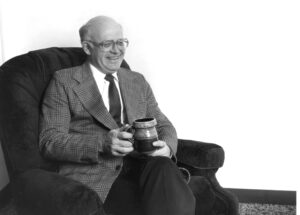The movement of God’s people between Jerusalem and Antioch, as described in Acts of the Apostles, helps identify some characteristics and practices for mission today.
Mission proceeds through persecution. In the text, sending is scattering, as the believers "were scattered" from the persecution that began over Stephen, the martyred deacon of the Jerusalem church (11:19, 6:5, 7:60). Those who migrate, fleeing the hardships of their lands, carry the good news of Jesus Christ wherever they go.
Mission happens through migration. This is mission that moves, not from the machinations of mortals, but by the mysterious workings of God. As in the first century, so in the 21st, we should entertain the possibility that migrants may be the means by which God is bringing about the renewal of the church and the evangelization of the world. Citizens of any land should likewise consider whether they will receive the blessings of God in the form of foreigners or build barriers.
Having crossed physical borders, mission crosses cultural barriers. Jesus is good news for all peoples. Just as Jesus came first for Israel but also for the Gentiles, so among these apostles—these "sent ones"—were those who spoke only to their fellow Jews and those who "proclaimed the good news" to the Gentiles (11:20; cf. Mt 10:5-6, 8:5-13). While not neglecting one’s people of origin, carriers of the gospel cross and seek community between cultures. In the text, crossing creates community, as "it was in Antioch that the disciples"—Jew and Gentile together—"were first called ‘Christians.’" Christian identity is intercultural (11:26).
On the other hand, crossing over does not automatically create intercultural community. Missional movement involves certain Spirit-driven practices that produce the people of God. The text highlights five movements to and from Antioch, each of which features a primary practice that builds the church.
First, apostles speak to others. Apostles do what those "men of Cyprus and Cyrene" did "on coming to Antioch"—they "proclaim the Lord Jesus" (11:20). These apostles are literally evangelists, those who report the news that Jesus is Lord (The Greek verb is euangelizo, to proclaim or announce good news). The fruit of this telling is faith. Indeed, "a great number became believers and turned to the Lord" (11:21).
Second, apostles encourage others. In the text, a second movement from Jerusalem to Antioch arises from the report of the turning of the Gentiles to the Lord. This report stirs the church in Jerusalem to "send Barnabas" to Antioch to check on the work begun by his Cypriot compatriots. True to his name, Barnabas "encouraged" the believers "to remain faithful to the Lord" (11:22-23; cf. 4:36). If Barnabas models authentic apostleship, then disciples are sent to encourage others. Like proclamation in the first movement, the pastoral ministry of encouragement brings growth. "And a great many people were brought to the Lord" (11:24).
Third, apostles promote teaching. We can infer that the need to ground the growing Jewish-Gentile body of believers in the way of Jesus drove Barnabas "to Tarsus to look for Saul", whom Barnabas "led to Antioch" (11:25-26). In this third movement to Antioch, Barnabas and Saul stayed with the church "for an entire year" and "taught a great many people." This teaching exercised patience—"for an entire year"—and humility, since Barnabas was not too protective of his pastorate to seek out Saul’s gift for teaching. Such teaching solidified a common identity and a new name— "Christians"—for this Jewish-Gentile body of Christ (11:26). To the quantitative growth in movements one and two, movement three brings the qualitative growth of robust religious instruction. Multiplication and maturation are not mutually exclusive.
A fourth movement features prophecy as a practice that strengthens the church. "Prophets came down from Jerusalem to Antioch", one of which, Agabus, "predicted by the Spirit that there would be a severe famine over all the world." Acting on Agabus’ word, the Antioch church resolved to "send relief" to their suffering siblings in Judea (11:27-29).
In a fifth movement, this "sending to the elders" of the Jerusalem church "by the hands of Barnabas and Saul" completes the cycle of mission (11:30). Scattered from Judea, apostles carried the good news that Jesus is Lord to the Gentiles. Sent from Jerusalem, Barnabas brought encouragement—and a teacher—to Antioch. Built by these missions, the Antioch church sends Barnabas and Saul to Jerusalem.
Yet the blessings of Jerusalem do not merely return to Jerusalem—they abound to the whole world. Like Jerusalem, Antioch will become a new center for the Jesus movement—the place from which the missionary journeys of Saul (Paul), Barnabas, and others will commence to bless all nations (13:1-3, 15:35-36, 18:22-23). Through all this sending, proclaiming, pastoring, teaching, and prophesying, God’s mission moves forward.





